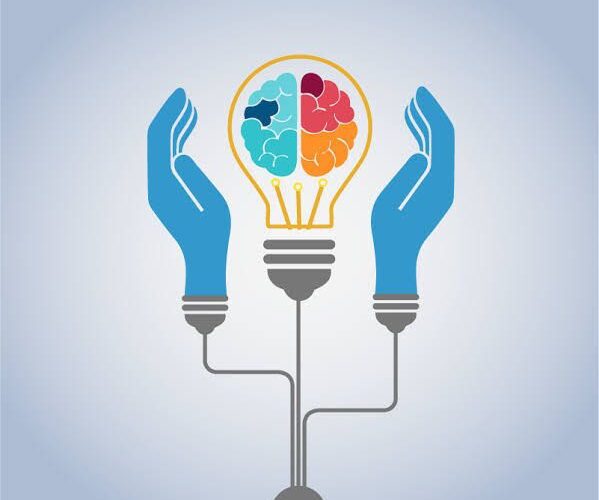Abstract–
The creation of material has been transformed by the digital era, which also brings opportunities and challenges for the protection of intellectual property rights (IPR). In addition to highlighting tactics for defending and upholding rights in the digital sphere, this abstract examines the importance of IPR in the age of content production. Because it fosters creativity and innovation, intellectual property rights (IPR) are extremely important in the digital age. IPR encourages content creators to push boundaries, invest resources, and create creative works that enhance several industries by offering a legal underpinning. Because content producers may profit financially from their work, it supports their livelihoods and opens up opportunities for new ventures. This promotes economic growth. IPR also involves the important task of maintaining originality and authenticity. It prevents unlawful use or exploitation of content producers’ distinctive voices, artistic techniques, and viewpoints.
In addition, IPR is essential for promoting cooperation and licencing arrangements. Content producers can license others to use their works under certain guidelines, which can result in profitable collaborations, idea exchanges, and the production of fresh, creative material. This cooperative strategy respects the rights of creators while facilitating the sharing of resources and information. Content providers can use a variety of tactics to safeguard and enforce intellectual property rights in the digital sphere. Legal proof of ownership is provided by copyright registration, which also improves enforcement powers. Metadata and watermarking aid in locating and tracking the source of digital content. While license agreements and contracts set forth the precise terms and conditions of use, digital rights management (DRM) technologies regulate access to and usage of digital property.
Intentional infringements are decreased and a culture of respect for creative rights is fostered by IPR education and awareness. When there has been serious violation, legal action may be taken to preserve and uphold IPR. By embracing Content creators can improve the protection and enforcement of their intellectual property rights by using these tactics and remaining flexible in the ever-changing digital ecosystem.
In addition to fostering a positive atmosphere for content production, this protects the value of their creative works and cultivates a thriving, long-lasting creative ecosystem in the digital age.
Copyrights shield an author’s creations against exploitation, such as duplicating them without the owner’s permission. Intellectual property rights include copyrights, patents, trademarks, and trade secrets. These rights serve to safeguard the creators and owners of specific concepts, goods, or inventions. Even with regulations protecting intellectual property, violations nonetheless happen frequently. Large-scale reproductions of literary, musical, or creative works frequently occur without the genuine owner’s consent, which is illegal and violates both rights. Every day, digital technology undergoes enormous everyday evolution. Although beneficial, this can also be detrimental because of copyright violations.
Before digitalization progressed, only literary, musical, and artistic works were protected. But as time went on, laws began to cover digital content as well, including databases, computer programs, layouts, and more. This study examines how digital content is protected by Indian intellectual property laws and whether any changes are required.
Keywords: Intellectual Property Rights, Content creation, Content monetization, Digital realm,
Online piracy, Licensing agreements, Copyright, IPR Infringement
Introduction-
With nearly all data kept on computers or other comparable platforms in today’s digitally connected world, it is vital to comprehend the problem of replicating data without the owner’s consent. It is critical to understand the legal framework governing this matter in our nation as well as the consequences of such actions. The primary aim of instituting intellectual property laws in our nation was safeguarding the rights of creators of creative works, including music, literature, and art, against unscrupulous copying and false representation of the original. With the advent of digital technology, this problem grew much more significant because it is now simple to replicate digital stuff, including but not limited to databases, software, programs, etc.
These factors led to the 2012 amendment of the Indian Copyright Act of 1957 to include new clauses that penalize both the proprietors of digital information and those who violate technology copyright.
Problems with copyright enforcement in the context of digital technology
A handful of the more noticeable and well-known vulnerabilities or difficulties in safeguarding digital technology are listed below:
- Because Internet programming is built on tracks, it is relatively convenient to duplicate, making information transfer between platforms not too difficult.
- Data may be sent in a matter of seconds from one corner of the world to another because to the Internet. Difficulties relating to content dissemination, replication, and mass distribution via digital platforms difficulties in enforcing copyright laws and safeguarding them in relation to digital content.
- Another problem that comes up here is that because the internet is so widely used, it can be challenging to determine which jurisdiction to use in the event of a disagreement. For instance, someone can readily steal content from digital platforms while seated in one nation, even though the creator or owner of that content might reside in a completely different nation.
- The Act of 1957 allows the public to reproduce works found online for fair use as long as the owner or author grants prior consent. However, because of the rapid improvements in technology, anyone may easily transmit data via the internet, making it very difficult for the rules to apply.
The protection of digital content is outlined in the Indian Copyright Act of 1957.
In 2012, the Indian Copyright Act of 1957 was amended to provide additional measures for safeguarding the intellectual property rights of published works, databases, and computer software.
The definition of literary works under the statute was expanded to include computer software in 1984.
The Act’s Section 14 forbids the distribution and replication of computer software without the necessary authorizations. Furthermore, the act’s definition of computer programs is now contained in Section 2 (ffc), which also defines literary works.
The next area of protection for digital technology is digital databases, which are simply an organized collection of data on digital platforms. A database is made up of two components: the computer program and the content that is stored. Fortunately, the Indian Copyright Act includes protection for digital databases under literary works, so all legitimate databases are protected in the nation. As previously mentioned, one issue that arises when digital content is copied is related to the right of reproduction. The Indian Copyright Act of 1957 protects the digital reproduction of content.
The right of reproduction is linked to a problem that occurs when digital content is duplicated, as was previously indicated. Section 14(1)(a) of the Indian Copyright Act of 1957 provides protection for digital reproduction of artistic, musical, and dramatic works. Furthermore, Section 2(f)(f) of the Act, which safeguards owners’ rights—including those of digital content—against unauthorized public communication of their works, also covers the combined rights of distribution and transmission to the public.
Difficulties with Online Content Protection
The ease with which digital content can be copied, shared, and distributed online makes copyright infringement a common problem. Users can now easily access and distribute copyrighted content without the necessary authorization thanks to websites, social media platforms, and file-sharing services. Because their work can be used without permission or acknowledgment, authors and content owners are seriously threatened by this pervasive infringement. Creators have legal recourse under copyright law to defend their rights against infringement. Copyright holders have the ability to take legal action against infringers and demand payment for the unauthorized use of their works through procedures like takedown notices, cease-and-desist letters, and lawsuits. In the digital age, these legal instruments are crucial for safeguarding intellectual property and discouraging.
Encouraging Innovation and Creativity
In addition to safeguarding intellectual property, copyright legislation is essential for encouraging innovation and creativity. A thriving cultural environment and the creation of new works are promoted by copyright law, which provides creators with financial incentives and legal protection. When content creators are aware that copyright law will safeguard their rights, they are more inclined to dedicate their time, energy, and resources to creating original work.
Additionally, copyright law supports a number of sectors of the digital economy, including software development, music, movies, publishing, and more. Copyright law protects intellectual property rights and fosters a level playing field so artists can profit from their creations. This financial incentive is crucial for promoting innovation and guaranteeing the digital economy’s continuous expansion.
Modifying Copyright Law to Address New Issues
Copyright law needs to change to meet new issues in the digital era as technology advances. Emerging technologies like machine learning, blockchain, virtual reality, and artificial intelligence have brought up difficult questions about copyright enforcement and protection. Protecting their creations against algorithmic infringement, deepfakes, and other digital manipulations is becoming more difficult for creators.
Policymakers, legal professionals, and business stakeholders must work together to modernize copyright laws and regulations in order to address these issues. This could entail creating best practices for online intellectual property protection, updating current laws, and putting in place new enforcement methods. Through continuous technological innovation and the modification of legal frameworks, copyright law can maintain its ability to protect digital content and authors’ rights.
Conclusion-
In summary The Indian Copyright Act addresses the protection of digital technologies, including databases, software, and programs, but there are still gaps that must be filled as quickly as possible. One problem that has to be resolved is that while artistic works are included by this Act, only material works are granted the right of reproduction associated with them. More stringent provisions regarding internet service providers and related materials need to be included to the statute. Even while only a small number of websites have implemented copy-paste restrictions, it is still possible to get around them by taking screenshots and simply copying the content. The general public needs to be made aware of the importance of

Author: SHREYA JAIN




